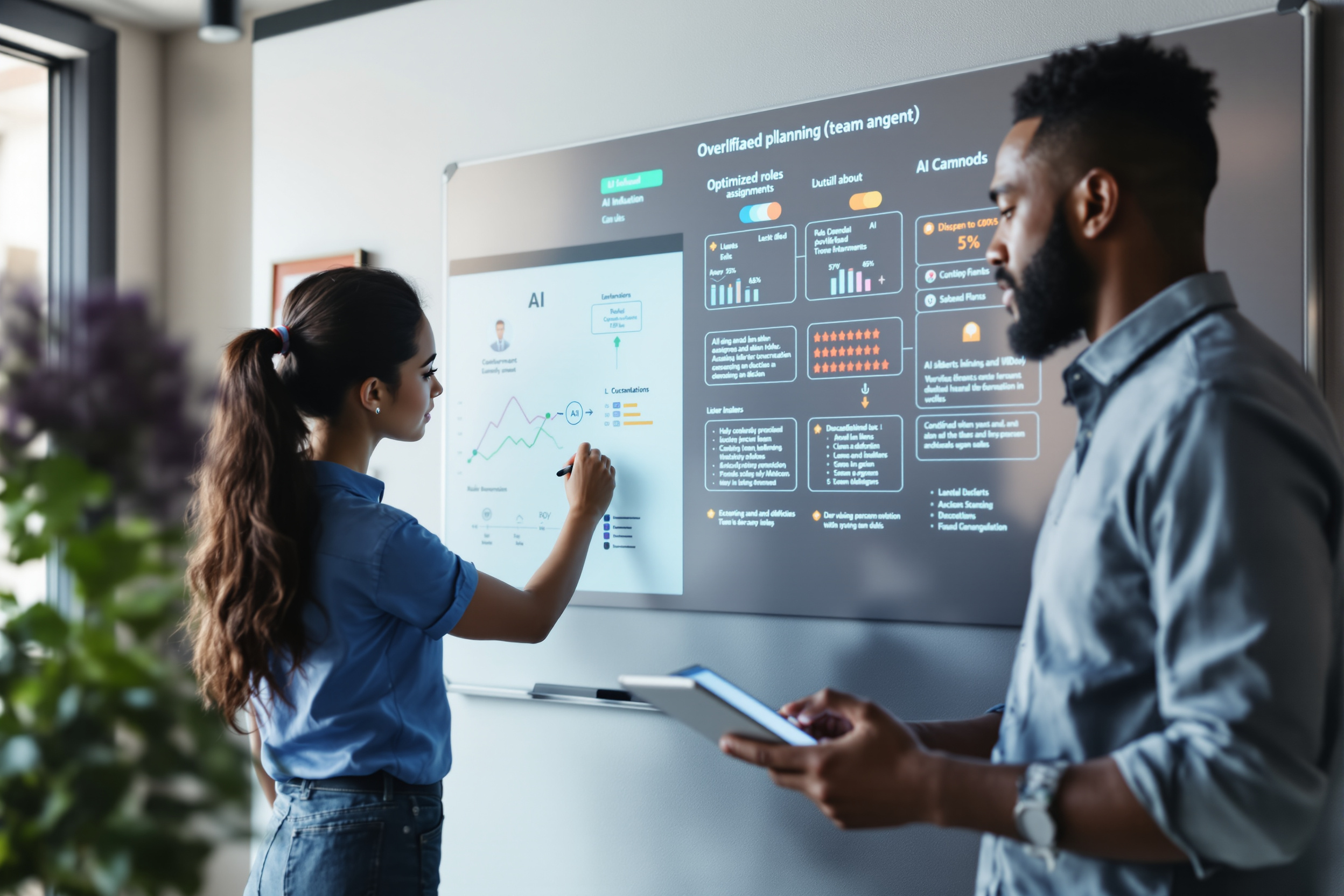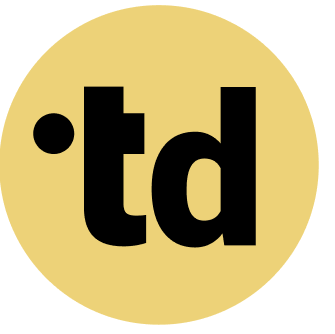Key Takeaways
Effective human-AI collaboration requires deliberately designed roles and workflows, not ad-hoc technology adoption.
Specialized tools for planning help Team Architects model hybrid teams, clarifying responsibilities and handoffs to boost productivity by over 30%.
A structured integration framework builds trust, reduces employee anxiety, and turns AI from a source of chaos into a valuable teammate.
Integrating AI agents into team workflows promises a massive 30% boost in productivity. Yet, many teams experience friction instead of flow, as undefined roles create confusion. The hero's journey for today's leaders involves conquering this operational chaos. This requires more than just adopting new software; it demands a new approach to organizational development. Team Architects need specialized tools for planning collaboration with AI agents. These platforms help define who does what, turning the challenge of hybrid work into a clear strategic advantage and enabling seamless human-AI teamwork.
Practical Framework for Team Architects
As a Team Architect, you can apply these principles to your organization:
- Map Current State: Document existing roles and responsibilities using a tool like teamdecoder.
- Identify Gaps: Where are roles unclear? Where do humans and AI agents overlap?
- Define Clear Boundaries: Specify which tasks are handled by humans vs. AI agents.
- Create Accountability: Assign clear decision rights for each role.
- Iterate and Improve: Continuously refine based on team feedback.
The New Team Chaos: Why Ad-Hoc AI Integration Fails
Many organizations are struggling with AI adoption, with only 4% of public sector entities in Western Europe reporting successful, meaningful implementation. A primary barrier is the lack of a clear plan, which creates significant change management hurdles. When AI agents are introduced without defined roles, human team members face uncertainty about their own responsibilities. This ambiguity leads to duplicated work and communication breakdowns, undermining the potential gains. Over 60% of European workers report their tasks are already changing due to AI, highlighting the urgency for structure. Without a deliberate strategy for integrating AI assistants, teams often experience a decrease in efficiency before they see any benefits. This initial chaos prevents teams from moving forward, stalling critical transformation efforts.
Sweet Teams Are Made of This: Defining Human and AI Roles
The foundation of any high-performing hybrid team is role clarity. When AI is treated as a teammate rather than just a tool, its capabilities can be properly leveraged. High-performing human-AI teams report up to 30% higher productivity, but only when trust is high and roles are clear. This requires a new kind of organizational development where tasks are meticulously mapped to either human or AI strengths. For example, AI can take over many data analysis, freeing up human experts to focus on strategic interpretation. Defining these boundaries is the first step in building trust and efficiency in a hybrid team. A clear model for managing AI and human roles prevents the friction that erodes team performance. This structured approach ensures every member, human or digital, contributes effectively toward shared goals.
A Team Architect's Toolkit for Hybrid Collaboration
Team Architects require a new class of tools designed specifically for hybrid team governance. These platforms go beyond simple task managers by enabling leaders to model complex workflows. They provide visual canvases for mapping out roles and responsibilities between people and AI agents. This process is central to effective designing team workflows. The best tools for planning collaboration with AI agents offer templates for different scenarios, such as customer-centricity or sustainability projects. These systems can reduce task completion times by an average of a significant number of by clarifying handoffs. They allow for dynamic adjustments as the team learns and evolves. You can try teamdecoder for free to see how a dedicated platform brings order to hybrid team structures. These tools are becoming essential for modern leaders focused on strategy operationalization.
Make Bots and Humans Click: A Framework for Seamless Integration
Our Playful Tip: A structured framework ensures AI integration feels less like a disruption and more like an upgrade. It helps make bots and humans click by creating a shared understanding from day one. Here is a checklist for Team Architects:
- Identify Core Tasks: Deconstruct a workflow into its individual tasks, analyzing which are repetitive and data-driven versus those requiring creativity, with a goal of automating at least some routine work.
- Allocate Roles Based on Strengths: Assign tasks to either humans or AI based on core capabilities, following frameworks that map out five levels of AI autonomy.
- Define Clear Handoff Points: Precisely document the triggers and data required for a task to move from a human to an AI, or vice-versa, reducing coordination time by a sign
- Establish Communication Protocols: Use a centralized platform for all human-AI interaction logs, ensuring the vast majority of transparency for troubleshooting and process improvement.ess improvement.
- Implement Feedback Loops: Create a system for human team members to provide feedback on AI performance on a weekly basis, enabling continuous learning for the AI models.
- Measure and Refine: Track key performance indicators for the hybrid team, such as a a portion of increase in output for support tasks, and refine role definitions quarterly.
Deep Dive: This approach to optimizing task allocation transforms AI from a black box into a predictable and reliable teammate. It builds the trust necessary for scaling new leadership models across the organization.
Teams Just Wanna Have Fun: The Payoff of a Structured Approach
When collaboration is planned, teams move from overload to flow. The immediate benefit is a measurable uptick in performance, with AI assistance increasing output quality by a portion of in writing tasks alone. This clarity reduces the anxiety associated with change, as some employees worry about job displacement from AI. By focusing on augmentation, not replacement, Team Architects build resilient and adaptive team structures. This strategic approach turns the challenge of AI agent integration into a competitive advantage. The result is a workplace where people are freed from repetitive work and can focus on the creative and strategic tasks they enjoy. This is how you build a truly effective hybrid human-AI team that is ready for scaling. Now, the focus can shift from managing chaos to driving innovation.
From Blueprints to Better Teams
The journey from chaos to clarity is a challenge of design, not just technology. Teams are the heroes, and the modern villain is ambiguity in a world of hybrid human-AI collaboration. With the right tools for planning collaboration with AI agents, Team Architects can conquer this chaos. By defining roles and architecting workflows with precision, you deliver immediate relief from overload and build stronger, more resilient teams. This is how you make change feel like play. See our pricing and start building better teams today. Try teamdecoder for free - shape your team and make change feel like play!
More Links
The German Federal Ministry for Economic Affairs and Climate Action offers a publication focusing on Industry 4.0, AI, and Robotics.
The Bavarian Research Institute for Digital Transformation provides a thematic monitor exploring the German population's AI skills and attitudes.
Deloitte offers its perspective on generative AI and the future of work.
acatech (German Academy of Science and Engineering) provides a publication discussing AI in companies.
Fraunhofer shares research news on AI in workplace settings, focusing on practical experience.
The German Federal Ministry of Labour and Social Affairs offers a brochure on working with artificial intelligence.
Bitkom, a German association for information technology, telecommunications, and new media, provides a press release on the use of AI at work.
Destatis (Federal Statistical Office) features an article discussing changes in the labor market.
FAQ
How does teamdecoder help with AI agent integration?
teamdecoder provides a platform for 'Team Architects' to visually design their team structures, clearly defining roles and responsibilities for both human and AI members. It helps you map workflows, clarify handoffs, and ensure Many people knows who is doing what, which is critical for successful hybrid team collaboration.
Is this approach suitable for small businesses?
Yes, the principles of structured human-AI collaboration are scalable. Small businesses and startups can use these frameworks to define roles from day one, ensuring that as the team grows and integrates more AI, the foundation is already in place for efficient collaboration.
What is the first step to improving our human-AI teamwork?
The first step is to deconstruct a key workflow into its individual tasks. Analyze each task to determine if it is better suited for a human or an AI. This initial analysis provides the clarity needed to start defining roles and responsibilities.
How do you measure the success of a hybrid team?
Success is measured through a combination of metrics, including process efficiency (time and resources saved), outcome quality (the final results), and team satisfaction. Tracking KPIs such as task completion times, error rates, and employee feedback are essential.





